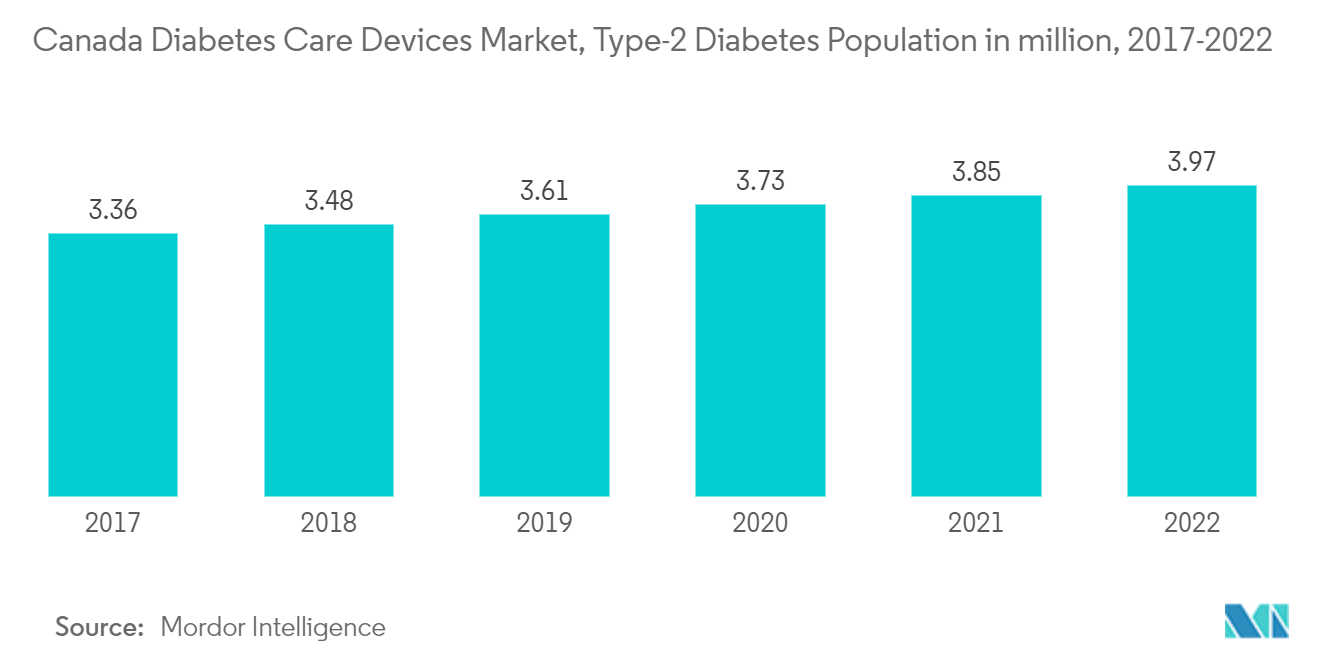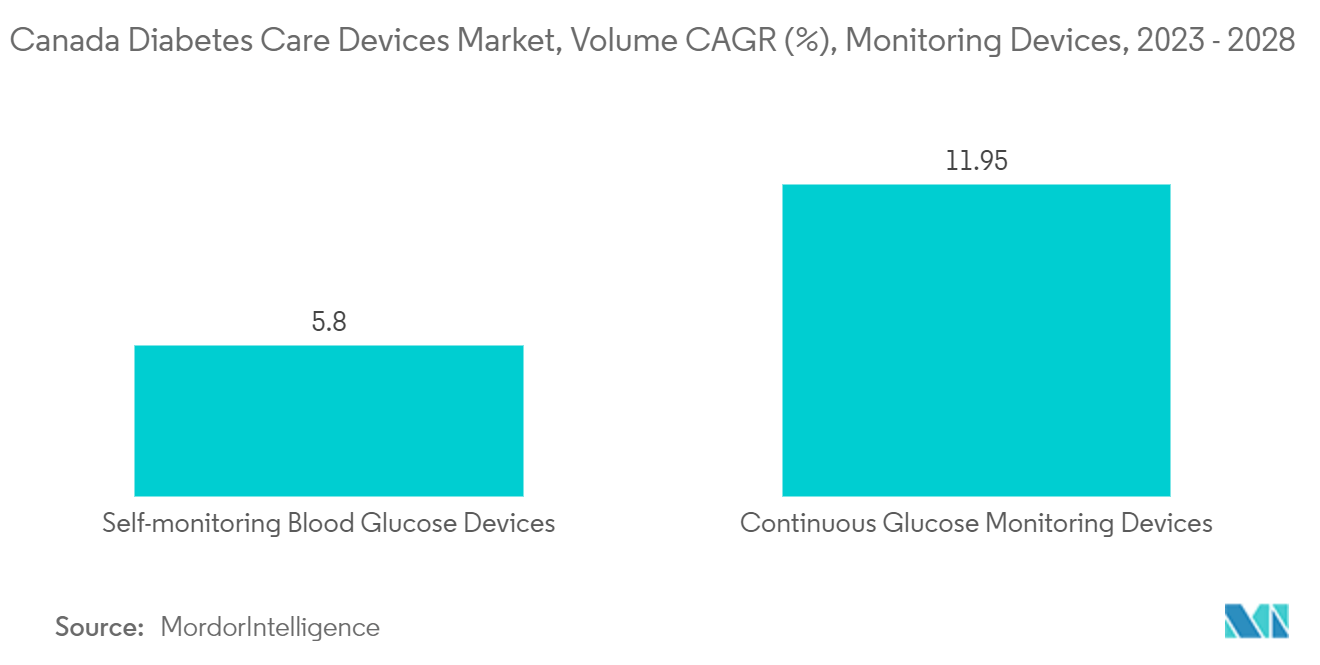Market Trends of Canada Diabetes Care Devices Industry
Rising Diabetes Prevalence in Canada
The diabetes prevalence in Canada is expected to rise by about 2.7% over the forecast period.
In the current year, according to Diabetes Canada, more than 5.7 million Canadians are living with diagnosed diabetes (type 1 or type 2 diabetes). However, 11.7 million Canadians are living with diabetes or prediabetes, a condition that, if left unmanaged, can develop into type 2 diabetes. Diabetes is also costing the healthcare system USD 30 billion per year to treat people with diabetes.
Diabetes care can be most effective when combined with an education program that incorporates instruction for people with diabetes on healthy behavior changes in response to blood glucose values and for healthcare providers on how to adjust antihyperglycemic medications in response to blood glucose readings. As part of this education, people with diabetes should receive instruction on how and when to perform self-monitoring, record the results in an organized manner, the meaning of various blood glucose levels, and how behavior and actions affect blood glucose results.
The Canadian Diabetes Strategy is a national partnership that includes the provinces and territories, many national health organizations and interest groups, and Aboriginal communities nationwide. The purpose of the Canadian Diabetes Strategy is to articulate and establish effective diabetes prevention and control strategies for Canada. With access to its partners' collective knowledge and experience, the Canadian Diabetes Strategy is well-positioned to determine the needs and gaps and ensure that resources are deployed accordingly.
Therefore, the studied market is anticipated to grow over the analysis period due to rising prevalence and increasing awareness through government initiatives.

The Self-monitoring Blood Glucose Devices Segment holds the highest market share in the Canada Diabetes Care Devices Market in the current year
The Self-monitoring Blood Glucose Devices Segment holds the highest market share in the Canada Diabetes Care Devices Market in the current year. It is expected to account for the highest CAGR of about 7.1% in the market over the forecast period owing to the increasing glucometers adoption in home care settings, growing preference for home-based self-monitoring, and recent product launches of advanced glucometers.
Glucose monitoring gives people with diabetes a complete picture of their blood sugar levels, which can influence short and long-term treatment decisions and improve health outcomes. It allows them and their healthcare providers to assess the glycemic status and adverse effects and to determine the effectiveness of glucose-lowering therapies. Glucose monitoring can improve blood sugar management and quality of life for people with diabetes, resulting in physical, social, emotional, and functional benefits.
Capillary blood glucose monitoring or self-monitoring of blood glucose is one way for people with diabetes to measure and assess their glucose levels. It uses a drop of blood from a finger prick to get a blood glucose reading using a blood glucose meter or glucometer. Those with diabetes are advised to work with their care team to determine the frequency and pattern of testing. In Canada, Capillary blood glucose test strips cost, on average, USD 0.79 each. Reimbursement from the government for test strips is provided through provincial drug plans and is based on the prescribed course of treatment, age, and income.
The market players are adopting various strategies such as collaborations, partnerships, mergers, acquisitions, and expansions to increase market share. For instance, in May 2021, Roche Diabetes Care Canada announced a collaboration with Ellerca Health, a Toronto-based company dedicated to improving patient care through innovation and technology. The partnership included the launch of Accu-Chek and 360Care, combining Roche's Accu-Chek Guide blood glucose meter, customized home delivery of testing strips, and Ellerca's self-management digital program, 360Care. It empowers patients to control their treatment schedule with access to a team of health coaches.
Thus, the abovementioned factors are expected to drive the segment growth over the forecast period.


